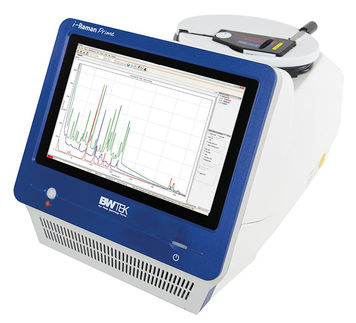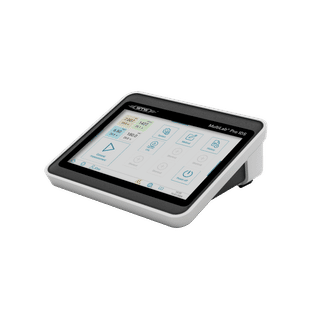| Heike Kamerlingh Onnes
|
|---|
Heike Kamerlingh Onnes
| | Born | September 21 1853(1853-09-21)
Groningen, Netherlands |
|---|
| Died | February 21 1926 (aged 72)
Leiden, Netherlands
|
|---|
| Residence | Netherlands |
|---|
| Nationality | Dutch |
|---|
| Field | Physicist |
|---|
| Institutions | University of Leiden |
|---|
| Alma mater | Heidelberg University University of Groningen |
|---|
| Academic advisor | R.A. Mees
Robert Bunsen
Gustav Kirchhoff |
|---|
| Notable students | Wander de HaasPieter Zeeman |
|---|
| Known for | Superconductivity |
|---|
| Notable prizes | Nobel Prize for Physics (1913) |
|---|
Heike Kamerlingh Onnes (September 21, 1853 – February 21, 1926) was a Dutch physicist. His scientific career was spent exploring extremely cold refrigeration techniques and the associated phenomena.
Early years and professorship
Kamerlingh Onnes was born in Groningen, Netherlands. His father, Harm Kamerlingh Onnes, was a brickworks owner. His mother was Anna Gerdina Coers of Arnhem.
In 1870, Kamerlingh Onnes attended the University of Groningen. He studied under Robert Bunsen and Gustav Kirchhoff at the University of Heidelberg from 1871 to 1873. Again at Groningen, he obtained his masters in 1878 and a doctorate in 1879. His thesis was "Nieuwe bewijzen voor de aswenteling der aarde" (tr. New proofs of the rotation of the earth). From 1878 to 1882 he was assistant to Johannes Bosscha , the director of the Polytechnic in Delft, for whom he substituted as lecturer in 1881 and 1882.
From 1882 to 1923 Kamerlingh Onnes served as professor of experimental physics at the University of Leiden. In 1904 he founded a very large cryogenics laboratory and invited other researchers to the location, which made him highly regarded in the scientific community. In 1908 He was the first physicist to liquify helium, using cryostats. Using the Joule-Thomson effect, he lowered the temperature to less than one degree above absolute zero, reaching 0.9 K. At the time this was the coldest temperature achieved on earth.
He was married to Maria Adriana Wilhelmina Elisabeth Bijleveld (m. 1887) and had a child named Albert.
Superconductivity
Kamerlingh Onnes conducted (in 1911) electrical analysis of pure metals (mercury, tin and lead) at very low temperatures. Some, such as William Thomson, believed that electrons flowing through a conductor would come to a complete halt. Others, including Kamerlingh Onnes, felt that a conductor's electrical resistance would steadily decrease and drop to nil. Ludwig Matthiessen (1830-1906) pointed out when the temperature decreases, the metal resistance decreases and then becomes constant with further decrease in temperature. At 4.2 kelvin the resistance was zero. The drop to zero was experimentally observed to be abrupt. Kamerlingh Onnes stated that the "Mercury has passed into a new state, which on account of its extraordinary electrical properties may be called the superconductive state". He published more articles about the phenomenon, initially referring to it as "supraconductivity" and, only later adopting the term "superconductivity".
Kamerlingh Onnes received widespread recognition for his work, including the 1913 Nobel Prize in Physics for (in the words of the committee) "his investigations on the properties of matter at low temperatures which led, inter alia, to the production of liquid helium".
Awards
- Matteucci Medal (1910)
- Rumford Medal (1912)
- Nobel Prize for Physics (1913)
Death and afterwards
Kamerlingh Onnes died in Leiden. Some of the instruments he devised for his experiments can still be seen at the Boerhaave Museum in Leiden. The apparatus he used to first liquefy helium is on display in the lobby of the physics department at Leiden University, where the low temperature lab is also named in his honor. His student and successor as director of the lab Willem Hendrik Keesom was the first person who was able to solidify helium, in 1926.
The Onnes-effect referring to the creeping of superfluid Helium is named in his honor.
The Kamerlingh Onnes crater on the Moon was named after him by the IAU.
Publications
- Kamerlingh Onnes, H., "Nieuwe bewijzen voor de aswenteling der aarde." Ph.D. dissertation. Groningen, Netherlands, 1879.
- Kamerlingh Onnes, H., "Algemeene theorie der vloeistoffen." Amsterdam Akad. Verhandl. 21, 1881.
- Kamerlingh Onnes, H., "On the Cryogenic Laboratory at Leyden and on the Production of Very Low Temperature." Comm. Phys. Lab. Univ. Leiden 14, 1894.
- Kamerlingh Onnes, H., "Théorie générale de l'état fluide." Haarlem Arch. Neerl. 30, 1896.
- Kamerlingh Onnes, H., "The Superconductivity of Mercury." Comm. Phys. Lab. Univ. Leiden, Nos. 122 and 124, 1911
- Kamerlingh Onnes, H., "On the Lowest Temperature Yet Obtained." Comm. Phys. Lab. Univ. Leiden, No. 159, 1922.
See also
- Timeline of low-temperature technology
- Timeline of states of matter and phase transitions
- Coldest temperature achieved on earth
- List of Nobel laureates
- History of superconductivity
Further reading
- de Bruyn Ouboter, Rudolf (March 1997). "Heike Kamerlingh Onnes’s Discovery of Superconductivity" (PDF). Scientific American 276 (3): 98-103.
- Laesecke, Arno (May–June 2002). "Through Measurement to Knowledge: The Inaugural Lecture of Heike Kamerlingh Onnes (1882)" (PDF). Journal of Research of the National Institute of Standards and Technology 107 (3): 261–277.
- Reif-Acherman, Simón (June 2004). "Heike Kamerlingh Onnes: Master of Experimental Technique and Quantitative Research" (PDF). Physics in Perspective 6 (2): 197-223. doi:10.1007/s00016-003-0193-8.
- Van Delft, D., "Heike Kamerlingh Onnes". Amsterdam, Bert Bakker, 2005. ISBN 90-351-2739-0 (in Dutch; an English translation is in preparation)
- Levelt-Sengers, J. M. H., "How fluids unmix : discoveries by the School of Van der Waals and Kamerlingh Onnes". Amsterdam, Koninklijke Nederlandse Akademie van Wetenschappen, 2002. ISBN 90-6984-357-9
- Kamerlingh Onnes, Heike, (Gavroglou, Kōstas. [ed.], and Goudaroulis, Yorgos [ed.]) "Through measurement to knowledge : the selected papers of Heike Kamerlingh Onnes (1853-1926)". Dordrecht, Boston, Kluwer Academic Publishers, c1991. Goudaroulis, Yorgos. ISBN 0-7923-0825-5
- International Institute of Refrigeration (First International Commission), "Rapports et communications issus du Laboratoire Kamerlingh Onnes". International Congress of Refrigeration (7th; 1936; La Hauge), Amsterdam, 1936.
External links and references
- Scientists of the Dutch School Kamerlingh Onnes, Royal Netherlands Academy of Arts and Sciences
- Albert van Helden Heike Kamerlingh Onnes 1853 – 1926 In: K. van Berkel, A. van Helden, and L. Palm ed., A History of Science in The Netherlands. Survey, Themes and Reference (Leiden: Brill, 1999) 491 - 494.
- Nobel Prize, Physics 1913 -- official site.
- Helium liquefier, G.J. Flim, Leiden, 1908 Drawing of the Physics Laboratory in Leiden, 1921 - Boerhaave Museum Dutch National Museum of the History of Science and Medicine.
- About Heike Kamerlingh Onnes, Nobel-winners.com.
- Eric W. Weisstein , Kamerlingh-Onnes, Heike (1853-1926).
- Dirk Reimer, "Historical background", A Guide to Superconductivity. 1997.
- Museum Boerhaave Negen Nederlandse Nobelprijswinnaars
- J. van den Handel, Kamerlingh Onnes, Heike (1853-1926), in Biografisch Woordenboek van Nederland. (In Dutch).
- Biography of Heike Kamerlingh Onnes (1853 – 1926) at the National library of the Netherlands.
| Nobel Laureates in Physics |
|---|
Wilhelm Röntgen (1901) •
Hendrik Lorentz / Pieter Zeeman (1902) •
Henri Becquerel / Pierre Curie / Marie Curie (1903) •
Lord Rayleigh (1904) •
Philipp Lenard (1905) •
J. J. Thomson (1906) •
Albert Michelson (1907) •
Gabriel Lippmann (1908) •
Guglielmo Marconi / Ferdinand Braun (1909) •
Johannes van der Waals (1910) •
Wilhelm Wien (1911) •
Gustaf Dalén (1912) •
Kamerlingh Onnes (1913) •
Max von Laue (1914) •
W. L. Bragg / W. H. Bragg (1915) •
Charles Barkla (1917) •
Max Planck (1918) •
Johannes Stark (1919) •
Charles Guillaume (1920) •
Albert Einstein (1921) •
Niels Bohr (1922) •
Robert Millikan (1923) •
Manne Siegbahn (1924) •
James Franck / Gustav Hertz (1925)
|
Complete roster |
(1901-1925) |
(1926-1950) |
(1951-1975) |
(1976-2000) |
(2001-2025)
|
| Persondata
|
| NAME
| Kamerlingh Onnes, Heike
|
| ALTERNATIVE NAMES
|
|
| SHORT DESCRIPTION
| Physicist
|
| DATE OF BIRTH
| September 21, 1853
|
| PLACE OF BIRTH
| Groningen, Netherlands
|
| DATE OF DEATH
| February 21, 1926
|
| PLACE OF DEATH
| Leiden, Netherlands
|
|







